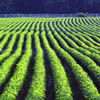Scissor-tailed Flycatcher
Tyrannus forficatus

Perching

Length: 13 in. (33 cm )
This spectacular species is not only beautiful but obvious as it perches in the open on fence posts, telephone wires and tree tops in open grassy areas. The large nest is made of twigs and stems and placed low in a crotch of an isolated tree or shrub. This flycatcher feeds on insects, often captured on the ground or low in the air. In the fall it also eats a few berries. Hawks, crows and ravens entering its feeding area are often attacked aggressively. A notorious post-breeding wandered, individuals occasionally but regularly move in late summer to points far to the north of its normal range and spend a few weeks before moving south to normal winter grounds.
The four-digit banding code is STFL.
Bibliographic details:
- Article: Scissor-tailed Flycatcher
- Author(s): Dr. Biology
- Publisher: Arizona State University School of Life Sciences Ask A Biologist
- Site name: ASU - Ask A Biologist
- Date published: 13 Jul, 2017
- Date accessed:
- Link: https://askabiologist.asu.edu/activities/bird/scissor-tailed-flycatcher
APA Style
Dr. Biology. (Thu, 07/13/2017 - 15:37). Scissor-tailed Flycatcher. ASU - Ask A Biologist. Retrieved from https://askabiologist.asu.edu/activities/bird/scissor-tailed-flycatcher
Chicago Manual of Style
Dr. Biology. "Scissor-tailed Flycatcher". ASU - Ask A Biologist. 13 Jul 2017. https://askabiologist.asu.edu/activities/bird/scissor-tailed-flycatcher
Dr. Biology. "Scissor-tailed Flycatcher". ASU - Ask A Biologist. 13 Jul 2017. ASU - Ask A Biologist, Web. https://askabiologist.asu.edu/activities/bird/scissor-tailed-flycatcher
MLA 2017 Style
Be Part of
Ask A Biologist
By volunteering, or simply sending us feedback on the site. Scientists, teachers, writers, illustrators, and translators are all important to the program. If you are interested in helping with the website we have a Volunteers page to get the process started.





